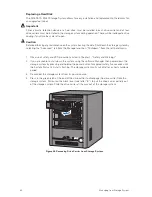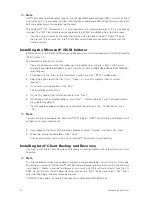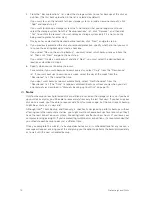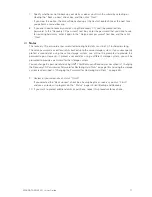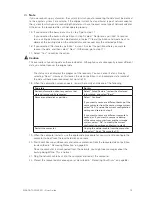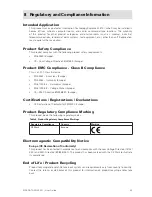
74
75
MAXDATA SN 40 M1 – User Guide
Protecting Local Disks
74
75
MAXDATA SN 40 M1 – User Guide
Protecting Local Disks
Recovering Data
With Client Backup and Recovery, there are several ways to recover data from your backups. The
best method to use depends on what you want to do:
• Recover selected folders, files, or sections of files
If you accidentally permanently deleted a folder or file that you want to recover, or if you just
want to retrieve some information from a file that you changed, you can access the backup
that contains the desired data and copy it to your local disk.
You can also use this procedure to try out different “what if” scenarios – for example,
changing the format of the data in a file – without adversely affecting the data on your local
disk.
For more information, refer to “Recovering Files from a Backup” on page 75.
• Recover an entire non-system disk or partition
If you protected a disk or partition that isn’t being used to run the operating system, you can
recover that disk or partition using Client Backup and Recovery. You might need to do this if
the disk has become corrupted or the data has been extensively damaged. The entire disk or
partition will be restored to its exact state at the time of the selected backup.
Caution
When you do this, you will lose any data that was written to the disk after the time of the selected
backup, as well as any backups that were performed after the backup you’re recovering. You might
want to copy any newer files that you want to keep to another disk before you recover the disk. To
copy files from a backup, refer to “Recovering Files from a Backup” on page 75.
In addition, if network errors occur or the storage system shuts down during recovery, your operating
system might become unstable, and you will have to recover it using the recovery CD (or re-install the
operating system if you did not protect your system disk). Be sure to recover your disks or partitions
only when your environment is stable.
You can continue to use your computer for other tasks while the data is being recovered,
although not any applications or files located on the disk or partition that you’re recovering.
For more information, refer to “Recovering a Non-system Disk or Partition” on page 76.
• Recover an entire system disk or partition
If you need to recover your system disk or partition – that is, the disk or partition used to run
the operating system – you can do so using the recovery CD. This is particularly useful if the
hard disk has failed and has been repaired or replaced, or if you want to duplicate an existing
disk configuration for another computer. The entire disk or partition will be recovered to its
exact state at the time of the selected backup. However, you won’t be able to use your
computer until all this process is complete.
For more information, refer to “Recovering a System Disk or Partition” on page 77.
Summary of Contents for SN 40 M1
Page 1: ...User Guide MAXDATA SN 40 M1 Rev 1 1...
Page 2: ...2 Contents...
Page 6: ...6...
Page 32: ...32...
Page 84: ...84...

